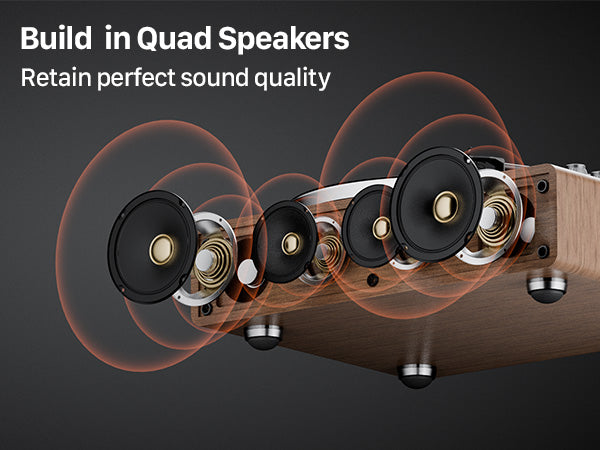In the vast, digital ocean of music, where every song is a click away, there exists a counter-current. It’s a movement driven not by convenience, but by scarcity, passion, and the primal thrill of the hunt. This is the world of the limited-edition vinyl collector.
It’s the feeling of finally securing that tri-color variant of Beyoncé’s Renaissance, a record that sold out in minutes. It’s the quiet reverence of holding a first pressing of David Bowie’s The Rise and Fall of Ziggy Stardust and the Spiders from Mars, a physical node in the network of his legacy.
This pursuit is not merely about listening to music. It’s about possessing a tangible piece of an artist's history. But to truly understand the obsession, we must look past the grooves and into the core of human psychology and the very definition of value.
The "Why": Decoding the Collector's Instinct
Why pay hundreds, even thousands, for an album you could stream for free? The answer is not in the music alone, but in a trifecta of powerful human motivators.
1. Scarcity, Status, and the In-Group:
This is the first principle of all collecting. An object's value is intrinsically tied to its rarity. A limited press run—be it 5,000 numbered copies or a 500-unit "test pressing"—transforms a mass-produced item into a coveted artifact. Owning it is a form of social signaling. It broadcasts a deep, discerning level of fandom. It says, "I was there," "I am dedicated," "I am part of an exclusive club." It's the same psychological driver that fuels the markets for rare sneakers, fine art, and classic cars.
2. The Dopamine of the Hunt:
The acquisition is often more thrilling than the possession. The collector's journey—scouring Discogs, waking up for pre-dawn record store drops, winning a tense eBay auction—is a neurological event. The anticipation, the chase, and the eventual capture release a flood of dopamine in the brain. This "hunt" provides a sense of purpose and a narrative of conquest that a simple click on "add to cart" can never replicate.
3. The Artifact as a Talisman:
In an ephemeral world of cloud-based everything, a rare physical record is an anchor. It’s not an access license; it’s a thing. You can hold it, weigh it, and study its unique features—the specific hype sticker, the color of the vinyl, the texture of the gatefold. For a David Bowie collector, holding an original UK pressing is like holding a religious relic. It was created during his lifetime; it carries the aura of that specific moment in cultural history. It feels closer to the artist's original intent, untouched by decades of digital remasters.
The Collector's Paradox: To Play or to Preserve?
Herein lies the central, often unspoken, tension for the serious collector. You’ve acquired this holy grail. Now what?
This leads to a critical blind spot in most discussions: the conflict between use value and asset value.
-
The Case for Preservation: Many ultra-rare records, especially if sealed, are treated like investments. Their value is highest in their mint, unplayed condition. Breaking the seal and playing the record literally diminishes its market value, sometimes by a significant margin. The collector becomes a curator, a museum keeper, preserving the object for its financial and historical significance.
-
The Case for Playing: What is the point of a musical artifact if not to be heard? For many, the ultimate fulfillment is to place that rare pressing on a high-quality turntable and experience its unique sonic signature. A Japanese first pressing of a classic album, for instance, is often revered for its superior mastering and quieter vinyl—qualities that can only be appreciated through playback.
This paradox is often solved by wealthy collectors who buy two copies: one to seal and vault, one to spin. For the rest of us, it’s a deeply personal choice between the role of curator and the role of listener.
The Duty of Care: Why Your Turntable Matters More Than Ever
If you do choose to play your limited-edition vinyl, the stakes are infinitely higher. You are not just playing a record; you are interacting with a valuable, often irreplaceable, asset. Playing a $500 Beyoncé collector's edition on a cheap, all-in-one suitcase player is not just an audiophile sin; it's an act of financial and cultural negligence.
This is where the turntable transitions from a playback device to a preservation tool.
A high-quality turntable is defined by its ability to extract the maximum amount of sonic information from the groove with the minimum amount of physical wear. This requires:
-
A Precision Tonearm: With an adjustable counterweight and anti-skate, you can set the tracking force to the exact specification for your stylus. This ensures the needle rides perfectly in the groove, not bouncing between the walls or exerting excessive, damaging pressure.
-
A High-Quality Stylus: A fine-line or micro-ridge stylus shape makes more precise contact with the groove walls, reading more detail with less force than a basic conical stylus, thereby reducing wear.
-
A Stable, Isolated Platter: A heavy, belt-driven platter ensures perfect speed stability, so you hear the music at the correct pitch, while the plinth's damping absorbs vibrations that could cause the stylus to mis-track and damage the vinyl.
A turntable like the XJ-HOME Recoder embodies this philosophy. It's engineered not as a toy, but as a serious instrument. It provides the essential, adjustable components needed to protect your investment. Choosing such a turntable is a declaration that you respect the artifact. It ensures that when you lower the needle on that rare Bowie pressing, you are honoring his legacy, not slowly erasing it.
Conclusion: The Curator of Your Own Culture
Collecting limited-edition vinyl is a profound act of personal curation. It's a declaration that some art is worth more than fleeting access. You are building a private museum, a personal archive of the music that defines you.
Whether you choose to keep them sealed on a shelf as pristine assets or play them on a high-fidelity system to unlock their unique sound, you are engaging with the music on a deeper plane. You are the hunter, the curator, and the keeper of the flame.
Understanding Check: Questions & Answers
1. Question: The article argues that the "thrill of the hunt" is a primary driver for collectors. Why can't a "limited-edition" digital file or NFT from an artist like Beyoncé replicate this same psychological thrill?
Answer: The thrill is tied to overcoming physical-world friction and acquiring a tangible object. A digital file, even if scarce, lacks physicality. The "hunt" for it is often a simple online transaction, devoid of the multi-sensory experience of a record store dig, the physical tension of an auction, or the tactile reward of holding the final object. The human brain evolved to value tangible possessions that required effort to obtain. A limited-edition vinyl record is a physical "trophy" that anchors a memory of the chase. A digital file is an abstract line of code that, despite its programmed scarcity, doesn't activate the same primal reward centers associated with tangible conquest and possession.
2. Question: Explain the "Collector's Paradox" and how it forces the owner of a rare David Bowie record to choose between two fundamentally different types of value.
Answer: The "Collector's Paradox" is the conflict between an item's use value (its quality as a thing to be used for its intended purpose) and its asset value (its monetary worth as a scarce object). For a rare David Bowie record:
-
Its use value is realized by playing it on a turntable to hear its specific sound—its unique mastering, pressing quality, and the music itself.
-
Its asset value is highest when it is in mint, unplayed, and preferably sealed condition. The act of using it (playing it) degrades its condition and therefore lowers its monetary value.
The collector is thus forced to decide: Are they the owner of a musical experience to be enjoyed, or the custodian of a financial asset to be preserved? They must choose which form of value is more important to them.
3. Question: Why does the quality and design of a turntable become more critical when playing a rare, expensive record compared to a standard, easily replaceable one?
Answer: The turntable's role shifts from being just a playback device to a preservation instrument. With a standard, $25 record, the primary concern is sound quality. If the turntable causes some wear, the record is easily and cheaply replaced. With a rare, $500 record, the primary concern becomes loss prevention. The record is an irreplaceable asset. A low-quality turntable with a poorly aligned tonearm and a heavy tracking force will actively damage the grooves with every play, permanently destroying the very thing that makes the record valuable and unique. A high-quality turntable, by contrast, is engineered for precision and gentleness. It minimizes wear, thus preserving both the sonic integrity and the financial value of the asset. The quality of the turntable becomes a direct insurance policy on the investment.





Leave a comment
All comments are moderated before being published.
This site is protected by hCaptcha and the hCaptcha Privacy Policy and Terms of Service apply.